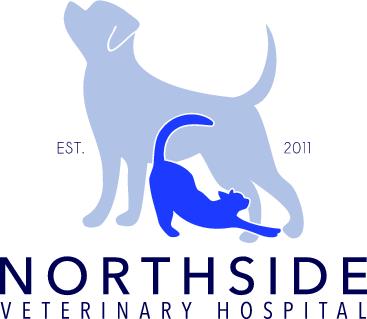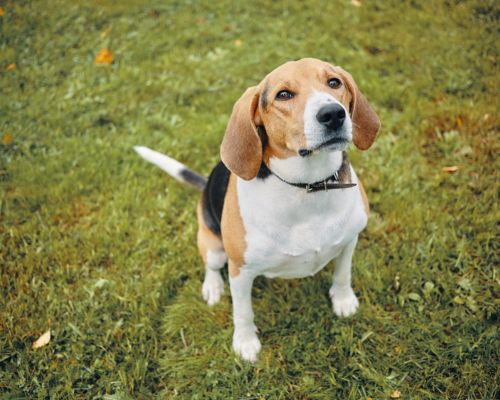Pet Entropion
Entropion is a serious eyelid condition affecting dogs and cats, and if left untreated, it can cause severe harm to the eyes, causing infections and vision loss.
Pet Entropion in Shawnee, OK
At Northside Veterinary Hospital, our highly trained vet surgeons have successfully treated hundreds of entropion cases in pets, improving their quality of life.
What Is Entropion?
Entropion is a painful, uncomfortable abnormality that causes part or all of the eyelid to roll inwards, causing the eyelashes and other hairs to rub against the cornea (the eyeball surface). This results in irritation, pain, cornea ulcers, squinting, perforations, and pigmentation in the cornea, causing visibility issues. The condition can affect both the upper and lower eyelids in one or both eyes.
Types of Entropion in Dogs
There are three types of entropion, including:
Inherited entropion: This is the most common type where dog breeds, such as Chow Chow or Mastiff, are susceptible to the condition. Entropion is usually present at birth in these breeds.
Acquired entropion: The eyelids roll inward due to the eye or surrounding muscle changes that occur due to age or ophthalmic problems. Inward rolling may occur due to anything that weakens the eye muscles or shrinks the eye globe, such as end-stage glaucoma. The condition occurs at any age, in any breed.
Spastic entropion: This occurs when there is a painful condition in the eye, such as a corneal ulcer, and can occur in any breed at any age.
Causes of Entropion in Dogs
The following factors contribute to entropion in dogs:
- Skin laxity due to aging in senior dogs
- Genetic abnormalities, especially in puppies
- Inflamed eye infection
- Length of the eyelid
- Shape of skull
- Gender
- Shape of the bone cavity that contains the eyeball
- Extensive skin folds and wrinkles around the eyes
Entropion can be either primary or secondary. A primary condition is caused by genetic factors, while a secondary condition affects your pet at any stage in life. Secondary entropion is caused by:
- Nerve damage
- Eyelid scarring
- Excessive weight loss
- Infections
- Corneal spasms and pain
- Trauma or inflammation from eye injuries
- Systemic dermatological conditions, such as generalized pyoderma or dermatophytosis (ringworm)
Primary entropion affects the following dog breeds:
- American Staffordshire Terrier
- Great Pyrenees
- English Toy Spaniel
- Bernese Mountain Dog
- Golden Retriever
- Boxer
- Akita
- Shar Pei
- Basset Hound
- Bloodhound, Bulldog
- Chesapeake Bay Retriever
- American Cocker Spaniel
- Irish Setter
- Dalmatian
- Clumber Spaniel
- Labrador Retriever
- Flat-coated Retriever
- Gordon Setter
- Great Dane
- Shih Tzu
- Toy and Miniature Poodle
- Yorkshire Terrier
- English Sheepdog
- Staffordshire Bull Terrier
- Saint Bernard
- Japanese Chin
- Siberian Husky
- English Springer Spaniel
- Mastiff
- Newfoundland
- Old Pekingese
- Pomeranian
- Tibetan Spaniel
- Weimaraner
- Rottweiler
- Pug
- English bulldog
- Chow Chow
Primary entropion presents itself before a dog’s first birthday. It is the most common cause of eyelid diseases in purebred dogs, caused by a hereditary defect. Selective breeding for specific traits can also contribute to primary entropion.
Signs and Symptoms of Entropion in Dogs
Dog breeds of any age can experience entropion. Most flat-faced dogs with entropion in the corner of the eyes near the nose (medial entropion) do not exhibit obvious signs of discomfort. Without immediate treatment, eye disease quickly progresses, so it is essential to contact your vet as soon as you notice the following symptoms:
- Inverted eyelid (turned inward)
- Excessive tears (epiphora)
- Keeping the eye shut
- Red eyes /conjunctivitis
- Yelps, crying out due to pain
- Lethargy
- Depression
- Profusely blinking
- Sensitivity to light
- Inner eye inflammation
- Corneal abrasion
- Squinting
- Dog paws or rubs his eyes
- Cornea pigmentation
- Mucoid or purulent eye discharge from the outer corner of the eye
- Corneal ulceration (cornea may have dull spots or clouds over, appearing blue or white on the eye surface)
Diagnosis of Entropion in Dogs
The condition can be typically diagnosed during an eye examination. An aesthetic eye drop is applied before the physical examination to reduce pain, stress, and discomfort. Your vet will do an optical inspection and ask whether your dog has experienced any trauma to the eye. If a puppy has not opened their eyes within the first five weeks of birth, it should be checked for entropion.
If your vet suspects corneal ulcers, a fluorescein test will be performed to determine it. The test is used to determine the function of the tear duct, which passes tears from the eye to the nose. The test also identifies staining of the cornea, abrasions, and lacerations in the cornea or on the eye’s surface. This is how the test is done:
The eye surface is cleaned to remove any mucus or discharge. A sterile strip containing a saline solution and a safe fluorescent dye is put in the dog’s eyes. The strip does not directly contact the cornea. If the dye turns green and adheres to any cornea damage, it means there is cornea damage. If there is no damage, the dye remains on the eye’s surface.
Your vet may also recommend a Schirmer test to measure tear production and to diagnose keratoconjunctivitis sicca or dry eye condition. When there is insufficient tear production, the eyes are red, painful, and irritated. During the test, the vet places a piece of filter paper on the lower eyelid of both eyes and closes the eyes. The filter paper is removed to assess how far the tears have gone.
A positive diagnosis for corneal abrasion, antibiotics, ophthalmic drops, ointments, or is prescribed to reduce pain and spasms. Surgery is recommended to remove unhealthy tissues if it does not heal properly.
Treatment for Entropion in Dogs
The surgical treatment permanently corrects entropion. It is done under general anesthesia, taking 20 to 40 minutes, depending on whether one or both eyes are being addressed. If entropion is on the lower eyelid, a small piece of tissue is removed from directly below the eyelid then the two remaining sides are pulled together and sutured. The scar becomes invisible over time.
Puppies born with severe entropion are first treated with a surgery involving rolling the eyelids outward to keep them from rolling inward, then corrected when they are mature enough (6 to 12 months). Sometimes, entropion may correct itself without requiring surgery.
Entropion Recovery in Dogs
You will be given postoperative instructions from your ophthalmologist surgeon. Confine your dog and supervise bathroom breaks. Your dog will require an Elizabeth collar to prevent it from rubbing its eyes. Our veterinarian will prescribe pain relief medications, anti-inflammatory drugs, and antibiotics.
Keenly follow the vet’s postoperative instructions and attend follow-up visits to monitor sutures and healing progress. For corneal abrasions or ulcers, weekly visits are necessary to check proper healing.
Most dogs have a successful outcome after entropion surgery. When the condition is caught early, they have an excellent prognosis. Breeding should be avoided for dogs affected by entropion. Severe corneal ulceration infections may lead to eye removal. After successful treatment, your dog will require life-long checkups for recurrence.
Your dog does not have to suffer anymore if it is affected by entropion. Our highly experienced and skilled surgeons successfully treat entropion. Contact Northside Veterinary Hospital today or schedule an appointment online for more information.

